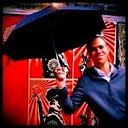Most change programmes start from the principle that they can push a new culture onto an organisation without realising that organisations not only have a pre-existing culture, they have several subcultures. Secondly, these evolve in response to new situations and opportunities. Except for during crises like the pandemic, the way a culture changes is invisible. Thirdly, some of these programmes don’t see these changes ironically because they don’t want to see that change often occurs organically, because they think it would make their programme redundant.
The programmes that I’ve experienced that have been most effective at driving change are those which help make visible the positive change taking place — through stories & voices which people can connect to, activities that people are gravitating to and opportunities to feed back on a project to help make it better that create greater ownership. Which is why it’s so important to create the space for learning from how people are changing the way they work and using this learning to adapt or reinvent for the future and creating the space to get them to reflect on what they can do to support the shift.
If you want to understand the cultures of an organisation, get someone new to tell you. Using human nature of wanting to conform to be part of a community, newcomers will pay attention to the way people speak, the words people use, the way the place looks or the rhythms & rituals of the organisation.
Someone who’s just joined won’t be able to explain why these cultural codes exist, so there’s a need to create the space for people to debate these things that people in an organisation will take for granted. It’s something that I’ve experienced directly in my own team, where we had uncomfortable but necessary conversations about race which exposed my blind spots.
You might see that as a trivial conversation, but for those people who feel excluded or underrepresented in an organisation, they don’t feel able to behave the “right way”. A study by LSE shows how “studied informality” and other informal codes help people get ahead in the workplace.
An organisation might have a set of values & commitments it professes officially, and in many organisations, these align to the dominant codes, but where the values contradict the culture of how things “actually work” is where people will believe in an “us v them” culture.
This is why it’s so important to create platforms not just for different voices in the workplace, to ensure greater representation at different levels, but also for different styles of leadership, to show the different ways you can espouse an organisation’s values, as well as create networks of support that cross over hierarchies.
In practice, that means opening up and challenging yourself to learn from people who think in a very different way and I’d recommend the book Sand Talk by Tyson Yunkaporta.
How well does your organisation’s culture align or contradict it’s stated values? How does your organisation create the space for different forms of leadership? What could be improved?
